Category: Online Trading
What Makes Traders Succesful In Online Stock Trading
Make no mistake about it, there are several different strategies and techniques that can be applied to make money in the markets with online stock trading. Although they may have different strategies, successful traders do share many things in common even if how they get their results varies. Too often, newbie traders are so

focused on the strategy, that they think it’s the end all be all, but that’s simply not true.
First, successful traders have a plan. They’ll go into a trade measuring what their potential profit and losses might be, before they place the trade. This includes their decision on how they will enter the trade, they might go all in or scale into the position. But the most important takeaway is they have a plan.
Second, they have the discipline to stick with their plan. The discipline comes from repetition, studying similar setups, or even backtesting and forward testing. They have studied past trades and identified what has worked, what currently works and what is not working at the moment. In other words, they are prepared.
If you’re unsure of your strategy, don’t have an outline of your exit, you’re more likely to make emotional decisions when things don’t workout your way. You might panic and not capitalize, or even worse, end up doing something dumb and losing money online stock trading.
Successful traders do not take losing personal. Again, they look at the markets in probabilities. Basically, they’re looking for high probability setups. If it doesn’t work  out, they’ll access their trading plan and see if there is anything they could have done differently. But just because a trade doesn’t work out, it doesn’t mean they will stop trading the strategy if they believe it’s still effective. Sometimes unexplainable things do happen in the market, and that is something you have to learn to be OK with.
out, they’ll access their trading plan and see if there is anything they could have done differently. But just because a trade doesn’t work out, it doesn’t mean they will stop trading the strategy if they believe it’s still effective. Sometimes unexplainable things do happen in the market, and that is something you have to learn to be OK with.
With that said, they focus on their strengths first and work on their weaknesses second. For example, Nike first came out as a shoe company that focused on runners. After they built that side of the business up, they moved onto creating sneakers for other sports. Eventually they expanded to apparel and a ton of products.
That is a solid approach to becoming a successful trader with online stock trading. Develop one or two bread and butter trades and then try to expand to other strategies. Don’t try to do everything at once. Also, don’t get frustrated if you can’t make money trading a certain way, maybe that doesn’t fit your personality or risk tolerance.
Successful traders spend a lot of time reviewing their performance, journaling and searching for methods to improve. Their goal is to scale up their operation to the highest level it can reach. They take a business approach to trading and focus on risk vs. reward. A special emphasis is placed on risk management. What good is your online stock trading if you win 5 straight trades and let one wipe all those gains away?
As you can see, risk management is extremely important. Some traders in online stock trading can trade the similar strategy, but one can have superior results based on how they manage risk, control their emotions, and execute the game plan.
It’s not always about your strategy, it’s sometimes more about the intangibles that will make you into a successful trader in online stock trading.
Value Stocks And Event Risk When Trading ETFs and ETNs
Today I had a cup of coffee, some oats and orange juice for breakfast.
And you know what?
Outside of this being a nutritious meal these are tradable assets.
They can either be traded as value stocks on the futures market or through the equity markets, via ETFs and ETNs.
Commodities are called “hard assets” and are typically categorized in these groups: Softs, Meats, Grains, Metals and Energies.
Softs: cotton, orange juice, sugar, cocoa and cotton.
Meats: live cattle, feeder cattle and lean hogs. 
Grains: wheat, corn, soybeans, soybean meal, soybean oil, oats and rough rice.
Energy: crude oil, brent crude, heating oil, gasoline, natural gas and ethanol.
Metals: gold, silver, copper, platinum and palladium.
Commodity prices are driven by the forces of supply and demand. We can also say that they’re hedges against inflation when trading value stocks. During periods of inflation, commodities help preserve purchasing power.
Now, if you decide on trading ETFs or ETNs on these hard assets… it’s important that you become familiar with the event risks involved. Of course, it’s not a one size  fits all type of thing, so let’s take a look at some of the event risks that traders should think about when trading value stocks in commodity ETFs or ETNs.
fits all type of thing, so let’s take a look at some of the event risks that traders should think about when trading value stocks in commodity ETFs or ETNs.
Event Risk #1: Weather
As mentioned earlier, commodity prices are driven by supply and demand forces. Of course, weather can play a major role. For example, floods in India could affect cotton supply (one of the world’s largest producers) and cause prices to shoot up. Bad weather has the potential to cause supply disruptions. In 2005, Hurricane Katrina caused damage to U.S. oil refineries in the Gulf of Mexico…causing crude oil prices to skyrocket.
Event Risk #2: Economics & Policy with Value Stocks
During periods of fear…investors will get out of risky assets, like stocks, and flock towards “safe havens” like bonds and gold. In 2011, Gold hit a record high because of fears that the European debt crisis would create massive inflation. Gold is very unique in that is seen as a hedge against inflation as well as a safe haven. Silver on the other hand, does not have that distinction.
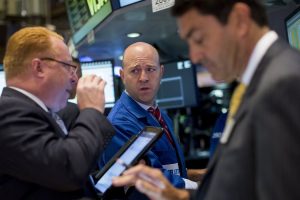 Always ask yourself what things mean in terms of supply and demand. For example, let’s say that China’s economy is showing signs of slowing down. What do you think that’s going to do the price of crude oil? This will most likey cause prices to shift sideways or down.
Always ask yourself what things mean in terms of supply and demand. For example, let’s say that China’s economy is showing signs of slowing down. What do you think that’s going to do the price of crude oil? This will most likey cause prices to shift sideways or down.
With that said, one of the key tools that central banks have is the ability to make changes to interest rates. Policy changes can affect commodities and stocks greatly if they’re not anticipated by the markets. Generally, central banks will try to prepare markets before they make significant changes to key interest rates in value stocks.
Event Risk #3: Geopolitical Risk
Commodities are natural resources…their prices are vulnerable to shocks…especially in countries in which they’re large suppliers or consumers of the product.
For example, back in March of 2104, Brent Crude oil prices spiked because of fear that Russia’s Vladimir Putin might cut gas flow. In May of 2014, Crude oil prices traded above $100 per barrel…due to concerns of tensions escalating in the Ukraine.
Summary
Now, if you’re trading value stocks that are highly correlated to commodities it’s important to be aware of the added volatility. For example, if the FOMC has a meeting announcement, it shouldn’t be a big surprise to see greater volatility in gold miners or gold ETFs. With that said, if there is uncertainty leading up to the event, it might make sense to lighten up your position or even hedge.
How To Profit From The Sympathy Play When Trading Blue Chip Stocks
On November 9th, 2016, it was announced that Donald Trump would be the 45th President of the United States In America. When the markets opened that day we started to see money flow from certain sectors into others. Intuitively, this makes sense, a new regime and potentially new policies will be enforced. Some industries will thrive, while others might suffer with blue chip stocks.
One sector that was resurrected, where the shippers of dry bulk cargo. For example, DryShips, Inc. finished that week up more than 195%.
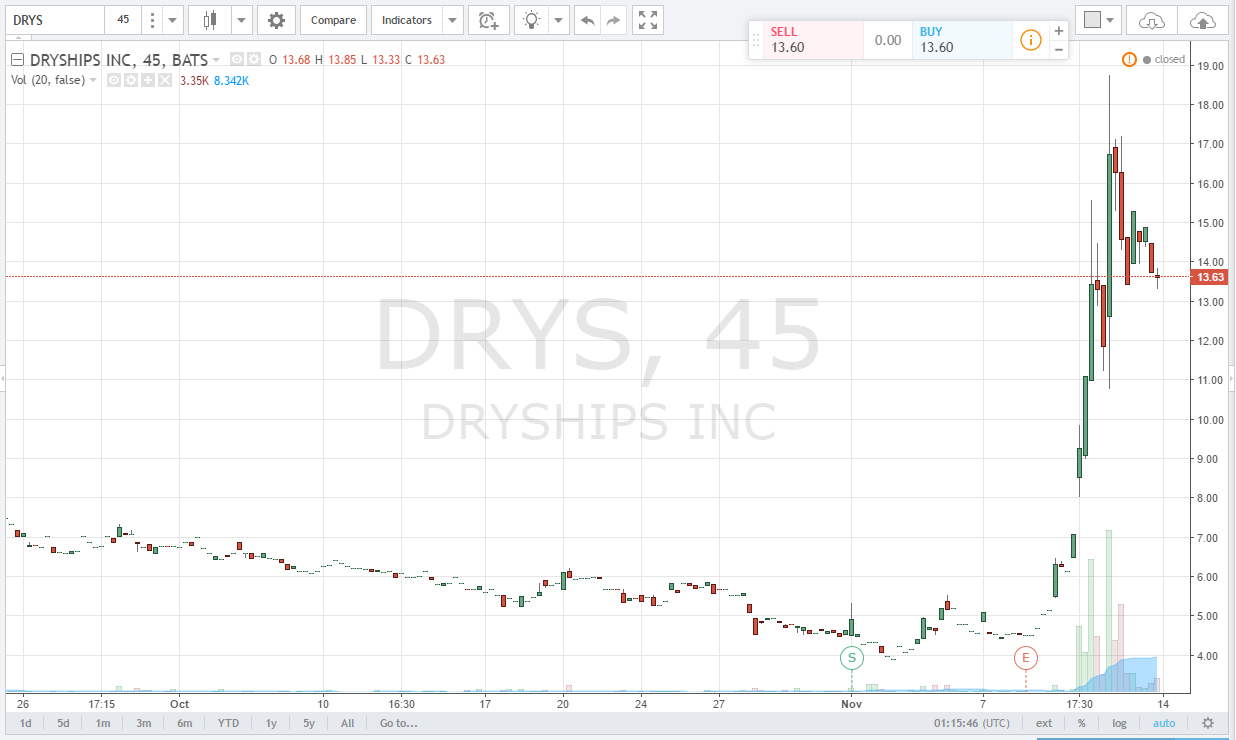
(source: TradingView.com)
The stock price spiked from about $5 to as high as about $19 a share in a couple days. According to YAHOO! Finance, more than 25% of the shares were short, creating a short squeeze in the blue chip stock.
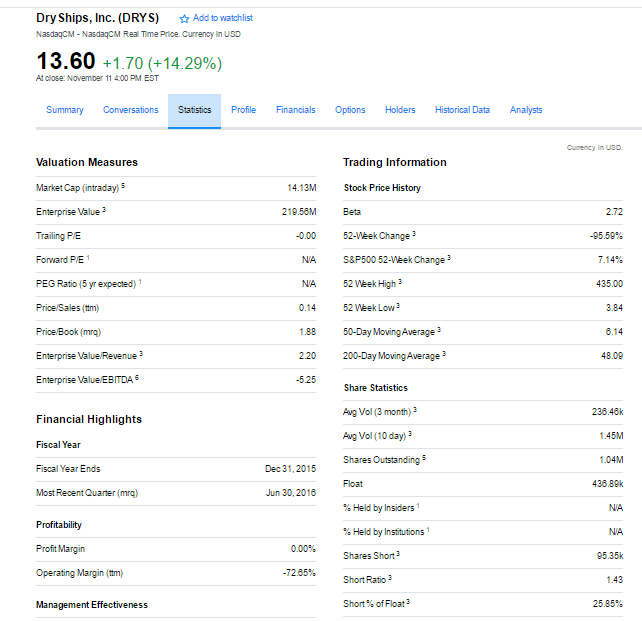
(source: YAHOO Finance!)
We had a catalyst, coupled with some fundamental facts about the stock. Specifically, there was a small float, about a million shares outstanding, and a high short interest, that helped drive the stock price higher.
Generally, when you have such a dramatic move in a stock, traders will look for comparable companies to piggyback off of.
In this example, Eagle Bulk Shipping Inc. (EGLE) shared some similar characteristics. It was trading under $10 per share, and in the same sector. With that said, some traders may feel they missed the move in DryShips, and look to pile into the next best thing. That week, Eagle Bulking Shipping closed more than 42% higher.
This strategy of piling into similar companies to ride the momentum of the hot blue chip stocks is called the sympathy play.
How can you use the sympathy play to profit?
Well, the first example is based on one stock really generating a lot of momentum and just finding something in the same space. But it doesn’t have to always be off an extreme move.
For example, let’s say Company A had earnings, but Company B has yet to report. One could wait for the EPS of Company A, and trade Company B off their results. If the EPS is positive, you take Company B for a long, if it’s negative, you take Company B for a short.
Another example, let’s say a very well known hedge fund is doing very poorly this year, and there are rumors that he might be facing redemptions or closing down the fund soon. Traders might start attacking his positions, even if there isn’t any news in those blue chip stocks.
On the other hand, let’s say a well known hedge fund manager is on a hot streak, traders might start buying stocks that they have on, hoping that they would appreciate in value.
Generally, you should be careful when relationships are loose, but volatility does create opportunities in the market.
The key is to be aware of companies, the sectors they are in, who their competitors are and see if you can take advantage of the sympathy play. As you’ve seen, there are a number of different ways that this strategy can be employed. These were just a couple of examples for you to get acclimated with the strategy regarding blue chip stocks.
How To Profit From The Short Squeeze Trading Stocks
On November 8th, 2016, The US Presidential Elections were held. Early the next day, it was announced that Donald Trump was the winner. The following day, we saw a number of sectors trade significantly higher (and some lower), based on what investors trading stocks thought it would benefit/suffer under the new President-elect.
Clearly, an event of this magnitude is not a one-off. A shift in policy changes will have a longer term effect on certain stocks. With that said, some sectors that shined that following day were in the infrastructure, pharmaceutical, and banking space. It was believed that the President-elect would cause an inflationary effect to the markets.
One company that was believed to have benefited from this regime change was Top Ships Incorporated (TOPS), it closed the week up more than 30%, largely off the election results. However, the stock had some other interesting information pertaining to it. A large percentage of the shares were sold short and still not covered by those trading stocks.
In other words, investors borrowed shares from their broker to sell, in hopes that prices drop so they could buy them at a lower price and cover. In this case, we had a situation where the stock reacted to positive news, in addition; traders, who were short the stock, were causing more pressure because they were buying shares to cover their short.
These two factors can cause a stock price to rise dramatically.
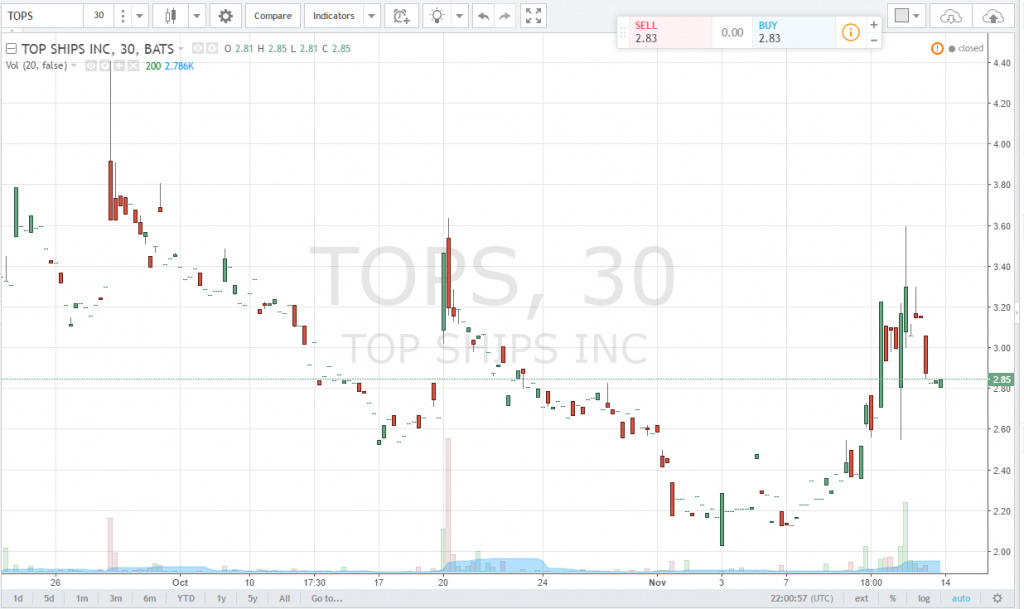
(chart: www.TradingView.com)
In this example, the stock price went from about two bucks to as high as $3.50 in just a matter of days.
If you’re a trader trading stocks, how can you use this information?
Well, let’s you traded mean reversion, and saw that the price of a stock normally trades in a $.50 range, and today for whatever reason it’s up $4. Without any other consideration, you decide to short and it ends up not working in your favor. Now, if you looked at the short interest of the stock, and noticed that it was relatively high, maybe you would have laid off on the short idea.
On the other hand, if you’re taking a long position, it might make more sense to size these trades smaller and play for a larger than normal move. A short interest stock combined with a positive catalyst can really send the stock price flying. Just being aware and be help in and of itself.
Is this information readily available when trading stocks?
The answer is yes, and for the most part, you can find a lot of it for free.
For example, if you hop on over to finviz.com, you can find important information like shares outstanding, shares float, and short float %.
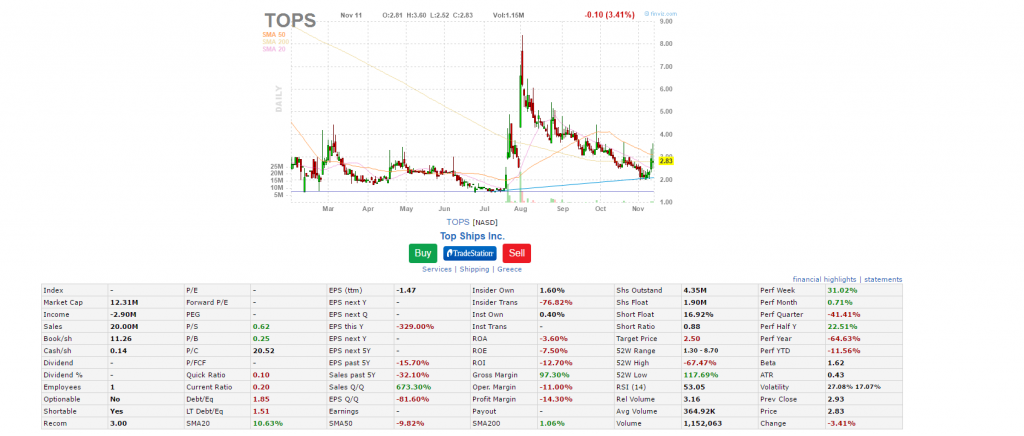
(source: finviz.com)
In this case, Top Ships had a short float ratio of 16.92%. However, it’s best to use more than one source. For example:
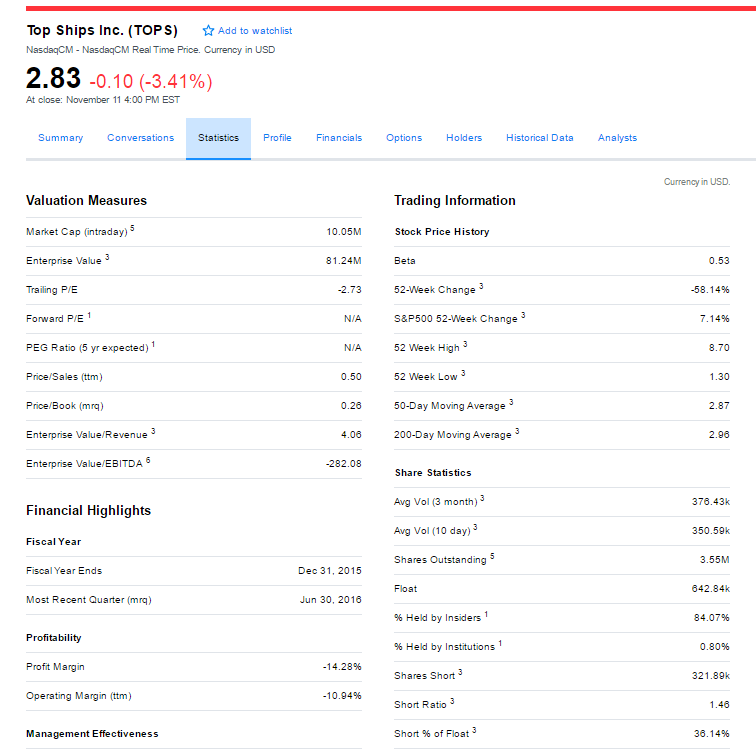
According to YAHOO! Finance, the short interest % on this company is 36.14%.
In a situation like this, where the two sources have a wide margin, check out another source.
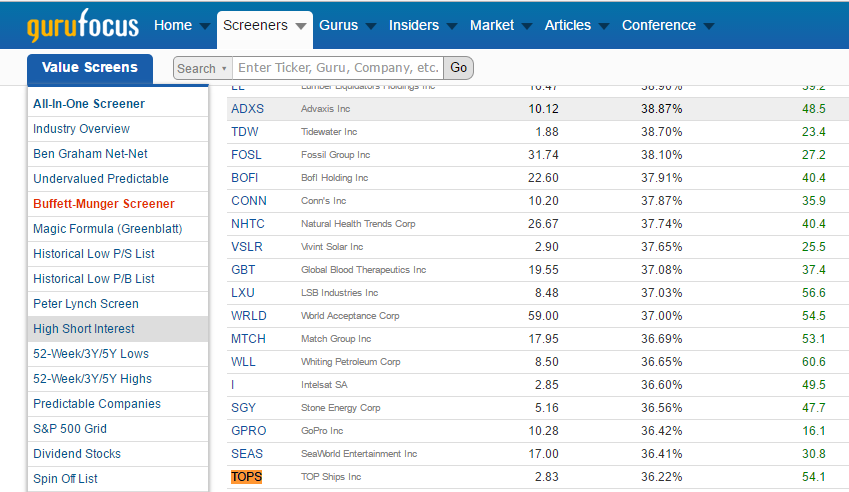
(source: gurufocus.com)
Being aware of a potential short squeeze can make you a lot of money or even save you a lot of money. The key is to be ready and prepared when trading stocks.
Should Day Traders Who Buy Penny Stocks Fear The Tick Size Experiment?
On October 3, 2016 the tick size pilot program was introduced into the market. It’s the regulators attempt to add liquidity to small cap stocks. The program consists of a control group and three test groups, there are 400 stocks per test group. Should day traders who buy penny stocks worry?
 The control group trades regular. On the other hand, the first test group will be quoted in five cent increments. For example, instead of seeing a stock being quoted 5.01 by 5.02, you’ll see it quoted in five cent increments like 5.00 by 5.05.
The control group trades regular. On the other hand, the first test group will be quoted in five cent increments. For example, instead of seeing a stock being quoted 5.01 by 5.02, you’ll see it quoted in five cent increments like 5.00 by 5.05.
Now, the second group is also quoted in the same fashion as the first group. However, there are some exemptions. Moving on, the third group works in the same way as the second, but they have exemptions for big block trades. Not only that, but they are subject to the trade-at-rule, which means you have to trade what is displayed on the exchanges before trading and buy penny stocks on a dark pool.
So the idea by having stocks trade in five cent increments is that market makers will be incentivized to facilitate orders. However, there are fewer and fewer traditional market makers left. The majority of market making is done by HFT and prop firms. For example, we wouldn’t have as many flash crashes in individual stocks if we still had traditional market makers.
You want to hear something crazy?
The person who helped lead the charge for the tick size pilot program is a former reality tv star turned politician. That’s right, not someone with a finance background or an understanding of market structure. You might not remember this, but the stock market used to trade in fractions, we later moved on to our present market structure where stocks are quoted in penny increments. So this change is kind of like going backwards if you think about it as someone that may potentially buy penny stocks.
Another argument on why the tick size program makes sense is that it might lead to  more coverage by banks. The idea is if banks get involved with market making, then their research departments will also start covering the stock. Better research on the stocks should lead to greater interest from investors. In their perfect world that’s how the dominos will fall.
more coverage by banks. The idea is if banks get involved with market making, then their research departments will also start covering the stock. Better research on the stocks should lead to greater interest from investors. In their perfect world that’s how the dominos will fall.
Every trader looks at the bid-ask spreads and makes a decision on whether the stock is worth trading. For example, if the average volume is low, the bid-ask spread is wide, and the depth of book is thin, then a lot of traders will avoid trading a stock like that. Generally, penny wide spreads, high volume, and a ton of bids and offers stacked on the book, are what most traders that buy penny stocks are looking for.
Overall, this sounds like an awful idea. The goal of the program is to collect data and see if situations improve in these low cap names. With that said, the program is running for about 2 years, so it’s not permanent. We’ll see how it plays out, whether or not the theory works in the real market for traders that buy penny stocks.
How Much Do Need To Get Started In The Stock Market?

Imagine you wanted to learn how to play the piano, and were in the market to purchase one. Now, if you’re not familiar with how much they cost, the range is anywhere between a couple thousand dollars to upwards of several hundreds of thousand dollars.
Do you think if you got a really expensive one, it would help you play better?
Heck no. Unless you’re rich, it makes zero sense to go out and fork over a lot of dough for something like this. The reason being, you are just starting out, you don’t even know if you’ll stick to it, and most likely you’re just playing for yourself, not like you need something fancy because you’ll be recording or performing for large audiences.
In business, they teach entrepreneurs to keep expenses lean and show proof of concept before expanding an operation. You don’t want to get involved with long-term leases or anything else that will put you under capital restraints. Again, you don’t know if the business will thrive, no reason to add pressure early on.
To most people, this makes a lot of sense. However, when you transfer this concept into penny stock trading, some don’t get it. You see, for whatever reason, some people think like you need to have a lot of money to get started in the stock market. That’s simply not true. And it is certainly not true when it comes to good stocks to invest in.

Going back to our previous examples, what is a lot of money going to do for you? In the beginning, you’re learning the fundamentals, discovering who you are as a trader, making mistakes, and hopefully learning from them. In other words, it’s a process… and having a lot of money doesn’t give you a pass or allow you to skip that. Why anyone would think this is the case with day trading stocks is somehow puzzling.
In fact, it actually makes more sense to start off small. Most likely, you will make more mistakes early in your trading career than later. Better to make small mistakes than expensive ones. For those saving, to get X amount to start trading… stop putting it off. Again, why wait? You might find out trading is not for you and realize that you just wasted time.
You must first learn the process of trading, finding penny stocks, and discover which strategies are suitable for your personality type. In addition, you must learn the skills of position sizing and risk management. For the most part, this will require you collecting data from your trades and analyzing that. That requires screen time, it doesn’t matter if you are risking $100 or $10,000 on a trade.
Ultimately, if you stick with it, learn and develop an edge… a time will come when you want to scale up your trading operation. Until then, start off small and begin the journey. Don’t focus on getting rich…focus on learning the process first. And don’t limit yourself to otc stocks, explore large cap stocks, too.
Imagine, leaving your day job to play the piano for a world-class orchestra without having any experience. Sounds silly right? Well, take that concept and apply it to trading. There is a learning curve involved in trading, the idea that you can leave your job to trade is really unrealistic. Well, initially it is. If you get to a point where you develop a strategy that has edge, and you’ve built up a solid track record…then yes, it’s possible to trade full time. However, you just need to get your feet wet in the beginning. That’s why you shouldn’t overly concern yourself with how much money do you need to get started — that’s the key to excelling at penny stock trading.
If You Don’t Understand ATR Now, You’ll Hate Yourself Later
Ever have the right idea on a stock trade, but not give yourself enough room for it work? For example, you buy too many shares, the stock initially drops and forces you to cover, only to see it later rebound and move in the direction you were expecting. You had the right idea, but sized the trade poorly.
Now, this a problem that many traders deal with, even ones who have several years of experience under their belt. Crazy moves happen and we underestimate volatility sometimes. However, some traders are absolutely clueless on volatility and they miss out on good stocks to buy.
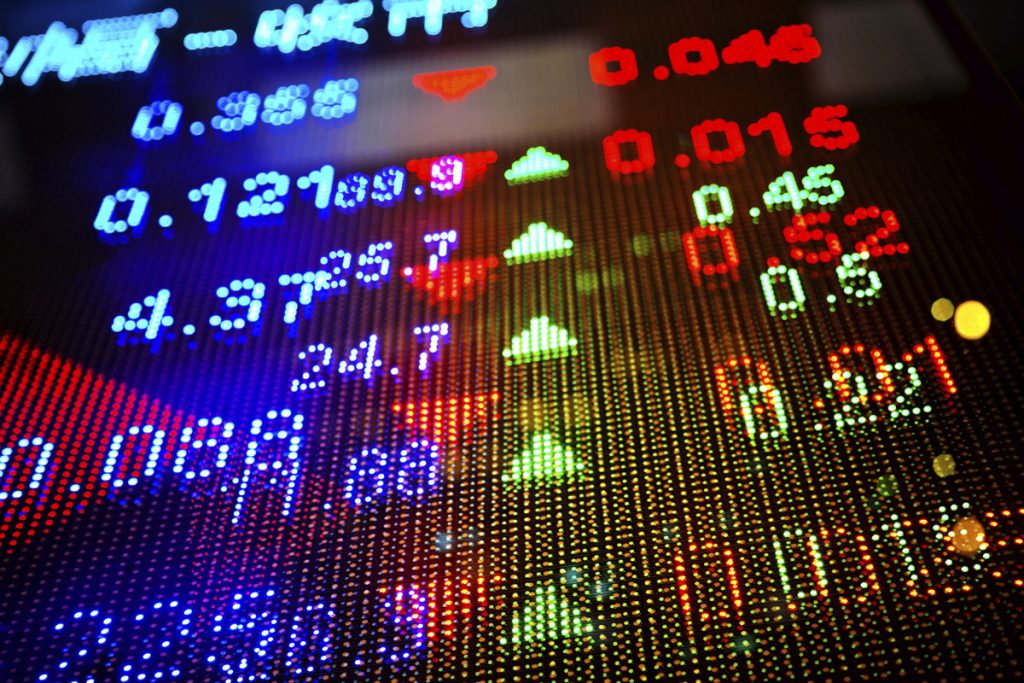
One tool that you could use to gauge volatility is Average True Range (ATR). In order to calculate ATR, the true range must first be discovered.
Now, the true range uses the most current period’s high and low range, not to mention, the previous close, if necessary. There are actually three calculations that need to be conducted and then later compared amongst each other.
In other words, the true range is the largest of these following:
The current period high minus the current period’s low. Example: $10 – $8 = $2
The absolute value of the current period’s high subtracted by the previous period’s close. Example: ($10 – $9)= $1
The absolute value of the current period’s low subtracted by the previous period’s close. Example: ($8- $9) = $1
true range=max[(high – low), absolute value(high – previous close), absolute value(low – previous close)
The ATR is a moving average, usually 14 periods, of the true ranges.
How can we use this to make better trading decisions on day trading stocks?
Well, it can help guide us on how to position size smarter. For example, if an ATR for a stock is $2, and we only want to risk $100 on the trade, buying 1000 shares is probably a horrible decision. If the stock moves just 10 cents you’ll be out of the trade based on your risk parameters. However, if the stock has an ATR of $2, a ten cent move is extremely minor.

Of course, there are other elements to consider like support and resistance levels, along with recent highs and lows. But you can see how some traders can size a trade so poorly without considering volatility. Not only that, it could lead to churning their account, hopping in and out of trades and racking up trading fees.
You want to put yourself in a position to win, you’re not doing that if you are not including volatility in your trading decisions on the best stocks to watch.
What else?
You could also use ATR as a tool to enter/exit a trade. For example, let’s say the ATR for a stock is $1, and you notice there is no news in the name and it’s down $1.25. If the overall market is relatively normal, then playing for a bounce might make for a decent long. The idea is that on a normal day we can expect the stock to trade in this range and that it should mean revert at some point.
Again, this works best when stacked up with other criteria, but you can still see how it can be useful. On the flip side, if the stock price seems overextended, you might lay off and wait for a better entry given its move and ATR.
A lot of rookie traders get their position sizing wrong, along with entries and exits. Having a greater understanding of volatility and using a tool like ATR can help alleviate some of those easy to avoid trading mistakes and zero in on undervalued stocks.
